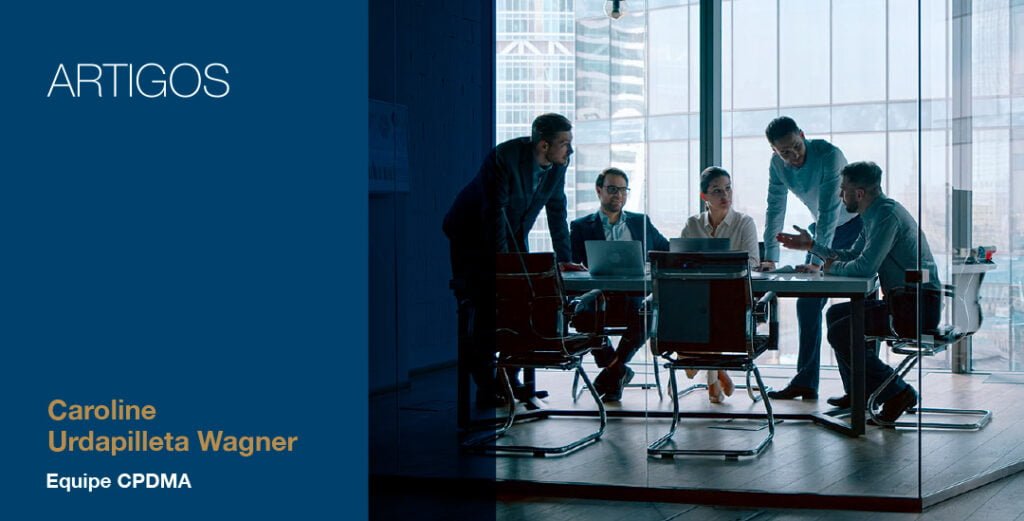Recentemente sancionada, a Lei 14.973/24, dentre outras medidas, prevê a desoneração temporária e gradual da folha de pagamento, reduzindo encargos trabalhistas para empresas de setores eleitos como estratégicos. A desoneração da folha consiste na substituição da base de incidência da contribuição previdenciária patronal sobre a folha de pagamentos (CPP), prevista no artigo 22, da Lei […]
CPDMA BLOG
Holding: pure, operational and equity

The business model called holding company, with legal provision in §3 of Article 2 of the Corporations Law (Law No. 6.404/76)is a company incorporated for a specific purpose: corporate participation and/or administration of assets. In addition, it can also be used for succession planning, in order to program the moment of succession of assets upon the death of the founding partner.
Depending on the choice of delimitation of the economic activity to be developed, that is, on the objectives for creating the company, the holding company may adopt the pure, mixed/operational or ownership types. A pure holding aims at holding quotas or shares in another company, whereas a mixed holding also aims at exploring the business/productive activity. Asset holding companies, on the other hand, are set up with the purpose of concentrating assets within the company in order to improve the management of assets and capital.
Just like any other company formation, a holding company goes through the process of creating a legal entity: adoption of the corporate type (limited liability company or joint stock company), subscription and payment of the assets to the company's capital stock, conversion into quotas or shares, registration of the corporate acts at the Board of Trade, transfer of title and ownership of the assets to the legal entity, among others.
In the financial, administrative, legal, and corporate aspects, it has a series of advantages, among them the better organization of assets and capital in order to better face eventual contingencies; the possibility of succession planning, with the reduction of the risk of litigation between heirs and the speeding up of the transmission of inheritance, as well as the generation of savings of all kinds of expenses (including tax); an adequate tax planning that provides greater tax savings.
In order to achieve the best benefits and avoid potential disadvantages, however, it is important that the incorporation and structuring of holding companies be well studied based on the purposes of their incorporators and the circumstances of each specific case. With a thorough and careful multidisciplinary analysis, the holding company may represent an important asset organization instrument, helping to mitigate and control risks and generating significant savings in time and resources.
Recent posts
In various areas of law, one can observe the presence of certain American adaptations in contracts, jurisprudence, and other business models. In corporate law, specifically, there are contracts that have even retained their original name, such as the vesting contract. As previously mentioned, the vesting model originated in the United States as a mechanism for […]
The phenomenon of stock options appeared in the United States in the 1950s and gained great visibility after the 1980s, when it became an almost absolute practice among large American companies. In the United States, the peak of the stock options granting system occurred between the years 2000 and 2001. […]
The commission of jurists appointed by Minister Luis Felipe Salomão drafted the bill to update and adapt the Civil Code, which is currently awaiting review by the Federal Senate. The main objective of the draft bill is to simplify the measures stipulated by the current law and align the Code with doctrinal and jurisprudential interpretations that have been […]
The decision handed down by the Federal Supreme Court (STF) in the judgment of General Repercussion Topic 725 and the Argument for Non-Compliance with Fundamental Precept (ADPF) 324, marks a crucial point in the definition of labor relations and their legal limits in Brazil. In a scenario where companies are increasingly looking for alternatives to [...]
In the age of technology, the start-up ecosystem has attracted many people in recent decades. This is mainly due to the rapid rise of the digital economy, which has led to many success stories of companies that today represent giant players in the market, regardless of the sector in which they operate. In this context of scalable entrepreneurial initiatives, startups have shown themselves to be a huge attraction [...]


